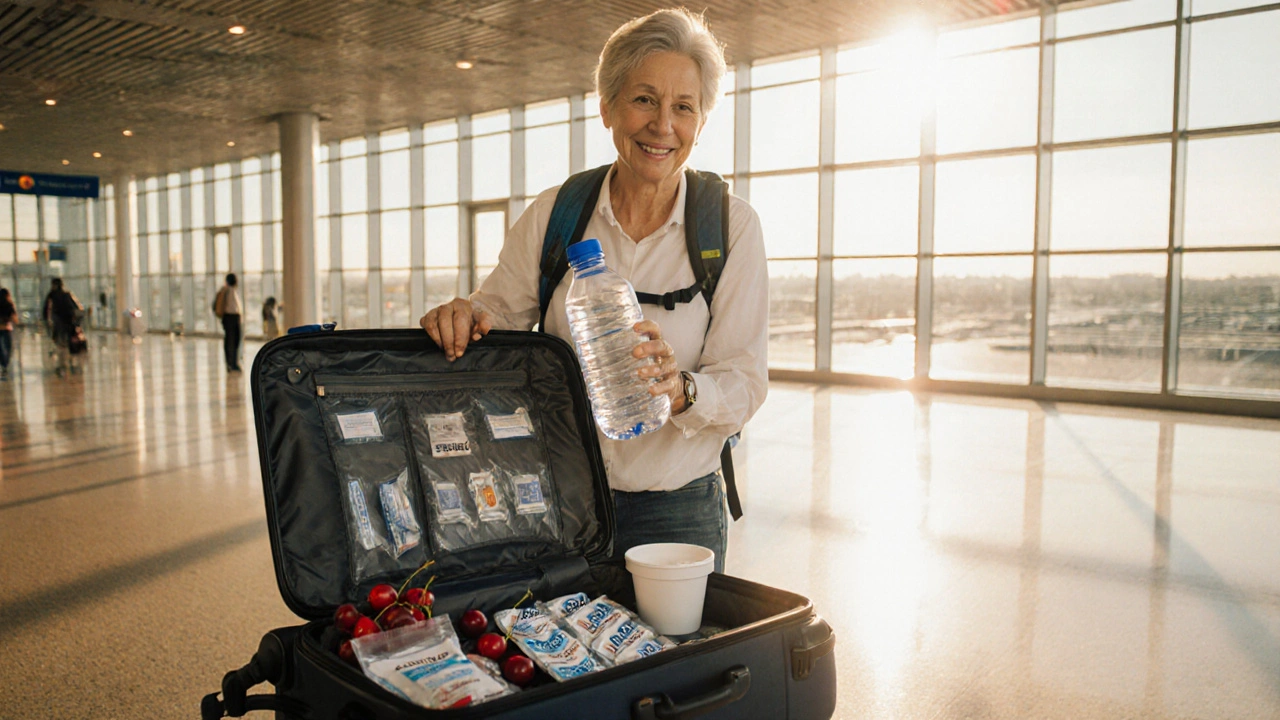Gout Diet Travel: Managing Your Health on the Road
When you plan a trip, the last thing you want is a painful gout flare‑up ruining the fun. That's where Gout Diet Travel, the practice of coordinating meals, hydration, and medication to stay gout‑free while away from home comes in. It’s also called gout‑friendly travel. Understanding Gout, an arthritis caused by uric acid crystal buildup in joints is the first step. Pair that with a solid Diet, a low‑purine eating plan that limits foods that raise uric acid, and you’ve got a winning formula. Finally, consider Travel, the logistical side of moving from place to place, including timing meals, staying hydrated, and keeping meds handy. Together, these three pillars create a roadmap that lets you explore new cities without the pain holding you back.
Key Strategies for a Gout‑Friendly Journey
First, gout diet travel demands a clear grasp of the foods that spike uric acid. Red meat, organ meats, and certain seafood are high in purines, so swapping them for lean poultry, tofu, or low‑fat dairy can make a big difference. Snacks are another minefield; airport vending machines love sugary drinks and salty pretzels, yet those can dehydrate you and raise uric acid levels. Pack portable options like mixed nuts (without added salt), fresh fruit, or a small container of Greek yogurt. Hydration is the unsung hero—aim for at least two liters of water daily, and keep a refillable bottle in your bag. If you’re flying, the cabin air is dry, so sip water regularly and consider electrolyte tablets that don’t contain sugary carbs.
Medication adherence doesn’t get a break just because you’re on a holiday. Keep your prescriptions in a travel‑ready pouch, complete with a copy of the prescription and a note from your doctor about dosage timing. Set phone reminders for each dose, and if you cross time zones, adjust the schedule gradually to avoid missed doses. Some travelers find that a small cooler bag helps keep liquid meds at the right temperature. Also, be aware of local pharmacies at your destination—knowing where to pick up a backup supply can save you from a crisis.
Finally, plan your meals around your itinerary. If you’re visiting a region known for heavy, meat‑centric cuisine, research restaurants ahead of time that offer salads, grilled vegetables, or seafood low in purines like shrimp. When dining out, don’t hesitate to ask for modifications: “Can I have the sauce on the side?” or “Could you swap the beef for grilled chicken?” Most chefs are happy to accommodate. And remember, stress can trigger gout attacks, so build in downtime—whether it’s a short walk, a quiet park bench, or a meditation app—to keep cortisol levels calm.
By weaving together smart food choices, steady hydration, diligent medication habits, and a bit of forward planning, you turn a potentially painful condition into just another travel detail. Below you’ll find a curated set of articles that dive deeper into each of these areas, offering actionable tips, product reviews, and real‑world examples to help you stay flare‑free wherever the road takes you.
Learn practical gout travel tips to stay pain‑free on vacation: hydration, diet, medication timing, footwear, and emergency planning for a smooth, flare‑free trip.



